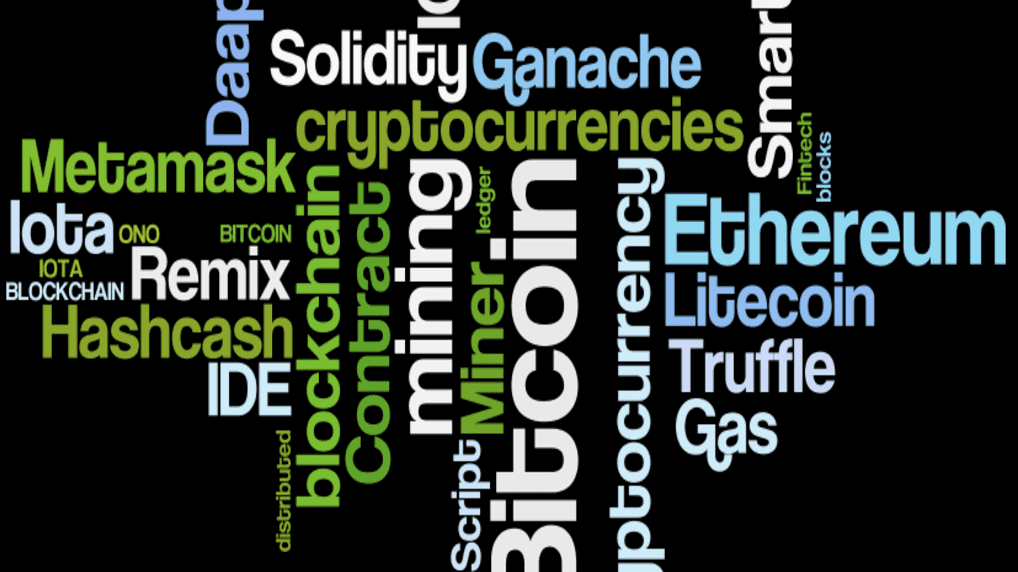a year ago
Crypto Terms You Should Know

As we delve into the ever-evolving world of digital currency, it's evident that cryptocurrencies have directed the envelope and gained a seat at the table in today's financial landscape.
They're no longer hush-hush; it's a bustling marketplace, and everyone's all ears about it. In navigating through this new-age financial jungle, you might often stumble upon indecipherable jargon or crypto-slang.
Arm yourself with the necessary cryptocurrency vocabulary and break down those barriers of complexity.
So, buckle up, and let's decipher this crypto-talk together and have the crypto terms explained!
Cryptocurrency Terms to Know for Beginners
Take these terms into your stride; having your crypto lingo up to snuff helps you sound more like a native in this digital currency environment. Dive in our glossary of the crypto terms for beginners!
Airdrop
A process in the crypto world where creators distribute free coins or tokens to the user's wallets, often for promotional purposes or to reward participation in a network.
Aping
Slang used in the crypto community refers to the act of investing large sums recklessly into highly speculative digital assets, typically driven by FOMO (fear of missing out).
Altcoin
A term applicable to all cryptocurrencies other than BTC, indicating their status as an 'alternative to BTC.' It’s one of the crypto key terms.
Bag
A colloquial term referring to an individual's holdings of a particular cryptocurrency. For example, if someone owns a considerable number of tokens, they're said to be holding a "big bag."
Binance
One of the largest global cryptocurrency exchanges that provides a platform for trading various cryptocurrencies. Binance has been commended for its wide variety of support coins.
Blockchain
Blockchain is a distinct type of database, often referred to as a distributed ledger. It stores data across several systems in an interlinked network of blocks, secured through strong cryptographic principles. Each block contains a multitude of transactions, and these blocks are tied together forming a chain-like structure —hence the name 'blockchain'.
One notable feature of blockchain technology is its inherent transparency and security. Once a block is finalized and added to the chain, the data it holds is almost impossible to alter, creating an immutable record of transactions or data.
This immutability makes blockchain technology especially suitable for securely recording:
- Events
- Medical records
- Transaction processing
- Identity management, and
- Documenting provenance
Examples and kinds of blockchains include:
|
Blockchain |
Example |
Definition/Description |
|
Public Blockchains |
Bitcoin, Ethereum, BSC |
Public blockchains are open to everyone and anyone can participate as a validator. Other examples include Ethereum, and Litecoin blockchain. |
|
Private Blockchains |
Quorum, Hyperledger Fabric, Corda |
Private blockchains restrict participation and, in some cases, people may need an invitation to join the network. They are faster, more efficient, and since the validators are trusted, problems associated with malicious usage are less prominent. Examples include Hyperledger and R3 Corda. |
|
Consortium Blockchains |
R3 Corda, Komgo |
A consortium blockchain is a partially private blockchain where specific operational rights are on a few nodes. For example, a group of banks may create a consortium where they become the only authorities who can authorize transactions. Examples include Quorum and Hyperledger Fabric. |
|
Sidechains |
RSK (Rootstock) |
A smart contract platform connected to the Bitcoin blockchain, enabling Ethereum-compatible smart contracts on Bitcoin. |
|
Hybrid |
Dragonchain |
Hybrid blockchains blend the best features of both private and public blockchains. They permit owners to operate in a closed environment for more sensitive tasks, while still providing certain data available for public viewing. |
Bitcoin
Bitcoin is the first decentralized digital currency, and it operates without any central authority or government.
Invented by an unknown person or a group of people using the pseudonym Satoshi Nakamoto in 2008, Bitcoin offers the promise of lower transaction fees than traditional online payment mechanisms and is operated by a decentralized authority, unlike government-issued currencies.
Each Bitcoin is essentially a computer file stored in a digital wallet application on a smartphone or computer. Transactions are recorded in a public ledger known as the blockchain, and these transactions are verified by network nodes through cryptography.
Bitcoin can be exchanged for goods and services with vendors who accept Bitcoin as payment, cash, or exchange for other cryptocurrencies through online platforms. What sets Bitcoin apart is its finite quantity- there's a limit of 21 million Bitcoins that can be mined, limiting the supply and therefore creating a specific value.
The following traits characterize BTC:
- Decentralization: No single entity is in control of the network. It's maintained by a group of volunteer coders and run by an open network of dedicated computers worldwide.
- Limited Supply: The total number of bitcoins in existence is limited to 21 million coins.
- Pseudonymity: Bitcoin transactions occur between cryptographic addresses and such addresses aren't associated with names, addresses, or other identifying information
- Immutability: Bitcoin transactions cannot be reversed, they can only be refunded by the person receiving the funds.
- Divisibility: The smallest unit of a Bitcoin is called a 'satoshi'. It is one hundred millionth of a Bitcoin (0.00000001).
Bitcoin was a pioneer, leading the way for a slew of other cryptocurrencies and effectively revolutionizing the way people think about money and transaction processing. It introduced a decentralized, secure way of trading value, prompting a shift in the financial world and beyond.
Bored Ape Yacht Club
A popular non-fungible token (NFT) collection on the Ethereum blockchain which includes cartoon images of apes. Ownership represents exclusive membership to a virtual club.
Burning
Dictionary definition might call this destructive, but not in crypto. It refers to the intentional and verifiable removal of cryptocurrency tokens from circulation.
Buy the Dip
Investment strategy refers to purchasing more of an asset after its price has dropped, in the belief of potential price recovery.
Candlesticks
Candlesticks are graphical representations of price movements in a specified time period in trading. They find their origins from the Japanese rice traders in the 18th century and have since become a popular tool among traders in the financial markets.
A typical candlestick consists of a body and wicks (or shadows). The body represents the range between the opening and closing prices, while the wicks denote the maximum and minimum prices during the timeframe.
If the closing price is higher than the opening one, the candlestick is often colored (or filled), typically green or white, indicating it was a bullish period. If the closing price is lower than the opening price, the candlestick is usually a different color, often red or black, indicating a bearish period.
Types of candlestick patterns comprise:
- Single Candlestick Patterns: These patterns involve only a single candle. Examples include Doji, Hammer, and Hanging Man. They deliver important market signals that traders use to make decisions.
- Double Candlestick Patterns: These patterns involve two candlesticks. Examples include Bullish and Bearish Engulfing, Tweezer Tops and Tweezer Bottoms. They usually signal a potential trend reversal.
- Triple Candlestick Patterns: These patterns involve three candlesticks and are considered to be among the most reliable candlestick patterns. Examples include Morning Star, Evening Star, Three White Soldiers and Three Black Crows.
Candlestick patterns can be a very powerful tool in trading. When combined with other forms of technical analysis that allows traders to make more informed decisions, potentially increasing their chances for profit while mitigating potential losses.
The key components of a candlestick comprise:
- Open Price: The price at the beginning of the time period being represented. It is usually marked by a horizontal line extending to the left of the candlestick body.
- Close Price: The price at the end of the time period. It is typically marked by a horizontal line extending to the right of the candlestick body.
- High Price: The highest price reached during the time period, represented by the upper end (wick) of the candlestick's vertical line.
- Low Price: The lowest price reached during the time period, represented by the lower end (wick) of the candlestick's vertical line.
Cold Wallet
A secure method of storing cryptocurrencies offline for added business security, greatly reducing the chances of theft from hacking.
Cross-Chain
A technology that enhances the interoperability between different blockchain networks, allowing for the exchange and communication of information and value.
Cryptography
The practice and study of secure communication techniques in the presence of third-party adversaries are extensively applied in cryptocurrency to secure transactions and control the creation of new coins.
Cryptocurrency
Cryptocurrency is a digital or virtual form of currency that uses cryptography for security. Unlike traditional currencies issued by governments (e.g., the US dollar or euro), cryptocurrencies are decentralized and typically operate on a technology called blockchain.
Cryptocurrencies facilitate secure, peer-to-peer transactions, offering a digital alternative to physical money. They have gained significant popularity and recognition as both a medium of exchange and a store of value.
Cryptocurrency is a rapidly evolving technology with various use cases, including digital payments, remittances, and investment, and as a means to enable decentralized applications and smart contracts. It has garnered significant attention from both individuals and institutions, reshaping the financial landscape and challenging traditional financial systems.
However, it also comes with regulatory and security challenges that continue to evolve alongside the technology.
CryptoPunks
One of the first non-fungible tokens (NFTs) on the Ethereum blockchain. It's a collection of 10,000 uniquely generated characters with no two exactly alike.
Dapps
Short for decentralized applications, these are applications that run on a peer-to-peer network, rather than a single computer.
DAO
A Decentralized Autonomous Organization (DAO) is a blockchain-based organization or entity that operates without centralized control or management by humans.
Instead, it relies on smart contracts and code to automate decision-making processes, governance, and operations.
DAOs are typically built on blockchain platforms like Ethereum, which provide the necessary infrastructure for creating and executing smart contracts.
It is a novel way of organizing and governing entities on blockchain networks. It leverages smart contracts and decentralized decision-making to create trustless and transparent organizations.
DAOs have the potential to disrupt traditional governance models and enable innovative applications across various industries, but they also face challenges related to security, governance, and regulation that need to be carefully navigated.
Decentralized Exchange (DEX)
An online platform allowing for direct peer-to-peer cryptocurrency transactions to take place securely and without the need for an intermediary.
Degen
Slang for 'degenerate,' this term is used within the crypto community to describe individuals who take on high-risk investments.
DeFi
Decentralized Finance, commonly referred to as DeFi, is a blockchain-based form of finance that does not rely on central financial intermediaries such as brokers, exchanges, or banks to offer traditional financial instruments. Instead, DeFi offers a decentralized, open-source, and transparent alternative, operating on public blockchains, primarily Ethereum.
DeFi platforms allow people to lend or borrow funds from others, speculate on price movements on a range of assets using derivatives, trade cryptocurrencies, insure against risks, and earn interest in savings-like accounts. What sets DeFi apart is that it expands the use of blockchain from simple value transfer to complex financial use cases.
Core aspects comprise:
- Accessibility: DeFi opens up financial services to anyone with an internet connection. Geographical location and the necessity of going through a traditional bank or institution are no longer barriers to financial activities.
- Interoperability: Built on public blockchains, DeFi applications can be integrated and work together, providing building blocks which developers can layer and compose to construct new financial products.
- Transparency: With DeFi, every transaction is public and can be audited. This transparency builds trust amongst participants without the need for a central authority.
- Permissionless: DeFi applications are generally open to everyone; a user does not need to ask permission to use them, unlike traditional financial systems.
- Programmability: Advanced programmable smart contracts automate financial services and create financial instruments in more complex and sophisticated ways.
Some well-known DeFi projects include lending and borrowing platforms like MakerDAO, Aave, and Compound; decentralized exchanges (DEXs) like Uniswap and SushiSwap; and yield farming platforms like Yearn.finance.
DeFi continues to evolve at a rapid pace with growing interest from both retail and institutional participants. As DeFi matures, it is expected to play a crucial role in shaping the future of finance.
Diamond Hands
A term used within the crypto community to describe investors who hold onto their investments despite market volatility and potential losses.
Dogecoin
A cryptocurrency that started as a meme but has gained popularity and practical use. It's well recognized for its Shiba Inu dog logo.
DYOR
It's an acronym for the phrase 'Do Your Own Research,' emphasizing the necessity to understand a crypto asset thoroughly before investing.
Ether
The native cryptocurrency of the Ethereum platform is commonly used in transactions within Ethereum’s blockchain.
Ethereum
A decentralized, open-source blockchain with smart contract functionality. It's currently the second-largest cryptocurrency by market capitalization, after Bitcoin.
Flash Loan
A feature that lets you borrow crypto instantly and without collateral, with the condition that it's also returned in the same transaction.
FUD
An acronym standing for Fear, Uncertainty, and Doubt. It's a strategy used in marketing and investing to influence public perception of an asset.
Gas
Transaction fees on the Ethereum network are called Gas. Gas prices can fluctuate depending on network demand.
Governance Token
A token that gives holders the right to vote on a platform’s governance decisions.
GWEI
Short for Gigawei, it's a denomination of Ether (ETH), often used when discussing gas prices on the Ethereum network.
HODL
Crypto lingo for 'Hold', used to describe a buy-and-hold strategy in relation to bitcoin and other cryptocurrencies.
Layer 1 and Layer 2
Layer 1 refers to the underlying blockchain architecture (like Ethereum), while Layer 2 is a secondary layer built on top of Layer 1 to increase transaction capacity and speed.
Liquid Market
A market where assets can be bought or sold easily with minimal impact on the asset's price.
Mainnet
The main network where actual transactions occur on the blockchain, as opposed to a testnet.
Memecoin
A type of cryptocurrency that originated from memes, like Dogecoin.
Metamask
A software cryptocurrency wallet used to interact with the Ethereum blockchain, enabling users to access their Ethereum wallet through a browser extension or mobile app.
Metaverse
A virtual-reality, collective shared space created by the convergence of physically virtually enhanced reality, often powered by blockchain technology.
Mining
The process in the blockchain network where transactions are verified and added to the public ledger (blockchain). It also involves the release of new cryptocurrency coins or tokens.
Mining Rig
It's a collection of specialized hardware set up by miners to perform the mining of certain cryptocurrencies, particularly Bitcoin and Ethereum.
Mining Farm
An aggregation of multiple mining rigs in one location to scale-up the process of mining and thereby generate a higher return.
Mint
The process of creating new tokens or coins in the crypto world. This involves immutable smart contracts in the case of non-fungible tokens (NFTs).
Multichain
A blockchain technology that facilitates the creation of multiple blockchains that can be used by any organization for processing and recording transactions, asset management, and others.
Moon
A term used in the crypto trading community to denote a dramatic rise in a cryptocurrency’s value.
NFT (Non-Fungible Token)
A type of digital asset that represents real-world objects like art, collectibles, and more. Each NFT is unique, indivisible, and can't be replaced with something else.
Off-Chain/On-Chain
On-chain transactions refer to those transactions which are validated and recorded on the blockchain itself. Off-chain transactions refer to those that happen outside the blockchain network and are not publicly recorded.
OpenSea
A popular marketplace for trading non-fungible tokens (NFTs) powered by blockchain technology.
Play to Earn (P2E)
An innovative gaming model in which players can earn real-world value (often in the form of crypto assets) through their in-game achievements or activities.
Proof of Work
A consensus algorithm in a blockchain network requires substantial work from the service requester, usually processing time by a computer.
Proof of Stake
An alternative to proof of work is where the total amount of a specific token coin type that a person holds determines how that person can mine transactions.
Pump and Dump
A fraud scheme that artificially inflates (pump) the price of an owned stock or crypto asset through false, exaggerated statements, and then sells off the pumped asset (dump), causing the price to plummet.
Rug Pull
A malicious maneuver in the crypto industry where crypto developers abandon a project and run away with investors’ money.
Satoshi Nakamoto
The pseudonymous person or group of people who developed Bitcoin and implemented the first blockchain data and database.
Sats, Satoshis
The smallest unit of Bitcoin, named in homage to Bitcoin's creator. One Satoshi (sat) is equivalent to 0.00000001 BTC.
Scamcoin
A pejorative term for a cryptocurrency that appears to primarily serve as a vehicle for fraud.
Seed Phrase
A list of words that store all the information needed to recover a Bitcoin wallet. This phrase is crucial to recover your account if you lose access to your device.
Sharding
A technique that partitions a blockchain network into smaller pieces, called shards, to scaling the throughput of blockchain effectively.
Shiba Inu
An Ethereum-based alternative (and somewhat competitor) to Dogecoin. The Shiba Inu, also known as Shibu, is a breed of dog from Japan, the face of which also represents Dogecoin.
Shitcoin
A negative term used to describe a cryptocurrency perceived as being worthless, lack of substance, or a clear use case.
Silk Road
It was a prominent online black-market platform, primarily known for selling illegal drugs. Bitcoin was the primary medium of transaction, leading to early negative associations with cryptocurrency.
Smart Contract
A self-executing contract with the terms of the agreement directly written into the code, a fundamental aspect of many cryptocurrencies, including Ethereum.
Solana
A high-performance, open-source project implementing a new, permissionless blockchain whose native cryptocurrency is SOL.
Stablecoin
A type of cryptocurrency that is designed to maintain a stable value, typically pegged to a specific fiat currency like the US dollar.
Staking
It involves holding a cryptocurrency in a wallet to lend computational power to the network. In exchange, participants earn rewards.
TLT
It can mean "think long term", encouraging investors to consider long-term gains over immediate, potentially short-lived price increases.
'This is gentleman'
A catchphrase used in the Bitcoin community, it originated from a typo in a Bitcoin forum and is typically used when the price of Bitcoin increases.
Token
A unit of value that is released by an organization and based on the blockchain technology.
Txn
Short for Transaction. In the context of blockchain, it refers to the records that are stored on a blockchain.
Utility Token
Digital tokens that are used to access a company’s product or services.
Vanity Address
A cryptocurrency address where a part of it is replaced by the name of the owner, a word, or a sentence.
Vaporware
In crypto terms, this refers to a project that is announced to the public, but never officially launched, basically software that doesn't exist beyond a concept.
Vitalik Buterin
A programmer who is widely known as the co-founder of Ethereum, and he has been involved in the computing Bitcoin Community since 2011.
Wallet
It's a digital place where you store your cryptocurrencies, analogous to a bank account.
Web3
A vision of the internet that is powered by blockchain technology. Web3 is seen as the next stage in the evolution of the internet.
Whale
An investor who has a large amount of capital. In cryptocurrency, whales can make significant changes to the market price due to the large sums of money they invest.
Whitelist
A list of approved participants that receive access privileges such as making transactions in an ICO or a cryptocurrency exchange.
WAGMI
An acronym for "We're All Gonna Make It", a positive phrase of reassurance often used in the crypto community.
Final Thoughts
In conclusion, navigating the frontier of cryptocurrency can be dizzying, filled with a plethora of terms and jargon that might seem perplexing at first glance. Through this glossary, we aimed to shed light on some crucial crypto terminologies, providing a roadmap for any novice venturing into this space.
Knowledge of these terms isn't just about understanding the chatter in the crypto community; it's about gaining the necessary insight to make informed decisions and partake in intelligent discussions.
Just as language evolves, so too does crypto-speak. As rapidly as the world of cryptocurrency is advancing, so is its lexicon, making it incredibly dynamic. Thereby, stay curious and never stop learning to keep up with this fast-paced domain.
Remember, while the crypto markets offer promising opportunities, they also carry significant risks, so you need to realize when to buy crypto. Therefore, always follow the cardinal rule: 'Never invest more than you're willing to lose.' Enter the market with a clear mind and strategy, and remember, the crypto world is more than just trading tokens; it's about creating a decentralized future.
News
How are Cryptocurrency Hot Wallets Different from Cold Wallets
What is USDT — Tether coin meaning in cryptocurrency
How to Buy and Invest in Bitcoin
Cryptocurrency Security in 2024
Difference Between CEX and DEX in Crypto
What Is a Crypto Exchange
The Biggest Crypto Scams of All Time
Difference Between a Crypto Exchange And Broker
Accounting for Cryptocurrencies
Types of Cryptocurrency Wallets
Stay informed about the latest news on crypto
Subscribe to our newsletter.








